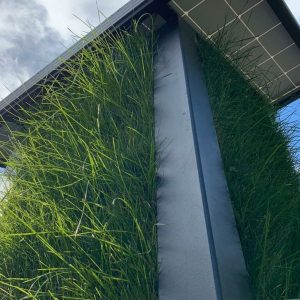Brief description of the technology solution and the added value it provides
A research team from the Centre for Plant Biotechnology and Genomics (GBGP) at the Technical University of Madrid has developed a biotechnological application of a gene responsible of an accelerated and greater production of branches in ligneous species without showing changes either in their growth characteristics or in the composition and anatomy of their wood.
The challenge facing the global electricity market is managing the issue of carbon emissions with growing nations needing power. Obtaining bioenergy from plants could help to alleviate the effects of global warming and energy safety problems, provided that high yields can be sustained. The possibility of generating trees with a greater biomass by manipulating genes makes transgenic plants preferred candidates for bioenergy production. Biomass is simple and cost effective with some estimations predicting that by 2050, it could provide 50% of the world’s primary energy needs. Biomass combustion technologies are fully mature with high commercial availability and a multitude of options for integration with existing infrastructure at both large and small-scale levels.
Description of the technological base
The lateral buds of most temperate woody species do not grow out during the season in which they form. These proleptic buds overwinter and grow out during the following spring. However, in poplar and a few other temperate species, as well as many tropical species, some lateral buds grow out sylleptically, that is, they grow out during the same season in which they form without an intervening rest period. Sylleptic branching may increase significantly branch number, leaf area and the general growth of the tree, particularly in its early years.
This solution consists of biotechnological application of the RAV1 gene (Related to ABI3 and Viviparous 1) in relation to their capacity for increasing the degree of development of sylleptic branching in ligneous species. Therefore, this tool can increase the biomass production of a forestry plantation genetically modified in this manner. This application is of great interest in various industrial sectors, such as energy industry or the chemical one.
“Biotechnology applied in perennial plants: inducing branching as a profitable trait to increase biomass yield”
Market demands
-
The sustainability potential of global biomass for energy is widely recognized. For example, the annual global primary production of biomass is equivalent to the 4,500 EJ (1 EJ=1018 J) of solar energy captured each year.
-
Obtaining bioenergy from plants could help to alleviate the effects of global warming and energy safety problems. In USA, the biomass power industry reduces carbon emissions by more than 30 million tons each year.
-
The sustainable use of biomass as an energy source requires comprehensive management of natural resources such as land and water. Unsustainable biomass production would erode the climate-related environmental advantage of bioenergy.
-
Currently, the amount of land devoted to growing energy crops for biomass fuels is only 0.19% of the world’s total land area and only 0.5-1.7% of global agricultural land. According to estimations, a mere 10% increase in the efficiency of biomass production through irrigation, manufacturing, fertilizing or improved management through the cultivation of idle land, would create energy equivalent to the total current global energy demand [Swedish University of Agricultural Sciences].
-
Biomass market lacks methods and standards for monitoring feedstock quality, which adds to the costs of collection, transportation, and storage of feedstock to the site of power plants.
Competitive advantages
-
Accelerated development of sylleptic branching while the plants are young to increase biomass production of a forestry plantation: costs reduction in raw material production.
-
Alternative application as timber logging, increasing both wood quality and forestry efficiency: reduction in the number of nodes in the trunk of high value limber ligneous species.
-
Multi-application solution in industrial sectors of great economic impact: energy, chemical, silvicultural, paper industries.
-
Potentially applicable to any genotype of a ligneous species: allow taking advantage of this genotype to a specific habitat.
-
Required forestry plantations can be established in surplus marginal or agricultural lands: no competence with the food crop for fertile soils.
Development stage
- Concept
- Research
- Lab prototype
- Industrial prototype
- Production
Contact
Contacto BranchBiotech
Isabel Allona
Centro de Biotecnología y Genómica de Plantas – UPM-INIA
e:
Contacto UPM
Área de Innovación, Comercialización y Creación de Empresas
Centro de Apoyo a la Innovación Tecnológica – UPM
e:















